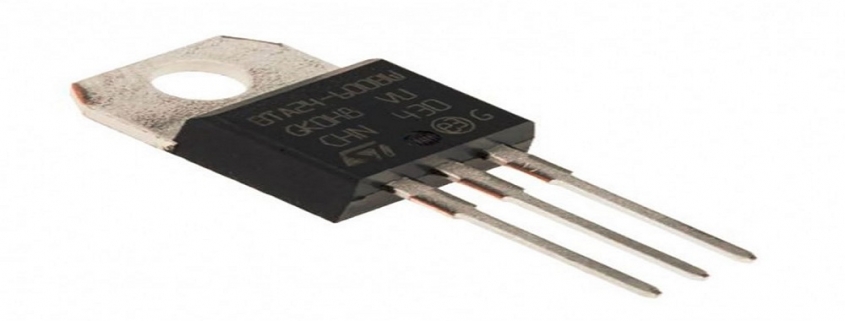Impact of TRIAC on the Smart Automation Market
The TRIAC market is expected to grow at a CAGR of 2.79% over the forecast period to reach US$231.263 million by 2027 from US$190.806 million in 2020.
TRIAC, or triode for alternating current, is a type of semiconductor device with three terminals, M1, M2, and Gate, that permits current to flow in either direction when activated. A power control system of this type has a wide range of uses in alternate current applications, such as electric motors in domestic appliances. TIRAC, unlike its competitor Silicone Controlled Rectifier (SCR), has a single fuse for safety, four modes of operation, and can control both positive and negative alternative current signal output. With such high-performance advantages, demand for TRIAC devices is expected to rise in the future. TRIACs are frequently used as switches in a wide range of electrical equipment, including lamps, fans, and motors. Regardless of their use, all TRIACs follow the same basic operating principles. Aside from these common qualities, they are often classified as simple TRIAC switch circuits or TRIAC variable power (or dimmer) circuits. The TRIAC market is divided into three categories based on packaging type: pin type, disc type, and stud type. Pin-type TRIAC is an integrated circuit unit with three terminals: MT1, MT2, and Gate. It is widely used in household appliances such as electric fans, heaters, and lamps because it provides strong stability over power management and speed.
The rise in household appliances is anticipated to increase the demand of TRIAC
TRIAC, or triode for alternating current, has a high voltage blocking capacity, allowing for effective power control over current flow and distribution. Because of their power control feature, such devices are commonly employed to control the speed of motors in domestic appliances. Cities are home to 56% of the world’s population, according to the WHO. This trend is predicted to continue, with the urban population more than doubling by 2050, when roughly seven out of ten people will live in cities. With cities accounting for more than 80% of global GDP, urbanization can contribute to long-term growth through greater productivity and innovation if properly managed. With rising urbanization, living standards, and an increase in disposable money, the demand for and use household appliances has grown over time. Various foreign businesses saw considerable increases in household appliance sales. According to Whirlpool Corporation’s annual report, in 2021, the company’s sales of refrigeration products increased by 10.2%, followed by dishwashers by 17.7%, and laundry products by 7.9%, compared to sales volume in 2020. Furthermore, Haier Smart Home Co.’s revenue in the kitchen appliance segment increased by 26.1% year on year to RMB 3.496 billion in the same year. With such a rise in the consumption of home appliances, the demand for TRIAC is anticipated to rise as well in the future, supporting the growth of the market as a whole during the projected period.
World moving towards Smart home automation will back the TRIAC market
Smart houses are more secure, use less energy, and can be operated remotely. This smart home automation system includes the TRIAC (Triode for alternating current). The utilization of TRIAC as the circuit’s principal workhorse makes this system cost-effective, adaptable, and dynamic. In the same way as Littelfuse’s five series of high-temperature Alternistor TRIAC switching thyristors that were released in October 2019. The combination of high-temperature capabilities, space-saving packaging, and a choice of current ratings makes them well-suited for Internet of Things (IoT) smart home applications that demand compact design but do not involve continuous high currents. Design engineers now have the freedom to cut board sizes for low-power applications while simultaneously assuring great field reliability and extended product life by giving more current rating options in a variety of surface-mount packages leveraging clip-attach assembly. This is an important step in making the IoT (Internet of Things) a reality. This assists the crippled and elderly. This radically alters the perception of traditional switches. These systems are relatively simple to install and do not require any changes to the current switches, making them more adaptable than their competitors on the market. These benefits are driving the growth of the TRIAC market.
TRIAC light dimmer section to hold a significant share of the market
Due to their great efficiency, low power consumption, and extended life, LEDs are becoming increasingly popular in a wide range of applications. One disadvantage of using LEDs is that they can be difficult to dim. TRIAC dimmers are dimmer types that can be used to dim LEDs. They accomplish this by rapidly switching on and off, allowing the average current to be dimmed. This makes them an excellent choice for dimming LEDs because they can withstand rapid variations in current without causing any issues. This use case of TRIAC is being utilized by companies around the world. For instance, GlacialPower released LED Constant Voltage TRIAC Dimming Drivers for Low Voltage Areas in November 2020. These drivers feature TRIAC dimming and are suitable for LED strip and under-cabinet lighting applications in restaurants, jewelry stores, homes, and theatres.
COVID-19 Insights
The global lockdown and transportation restrictions hampered the activities of several industrial sectors. The closure of numerous facilities and factories reduced the use of alternate switching applications for industrial lighting. In addition, demand for domestic items such as washing machines and refrigerators fell dramatically. For example, according to Whirlpool Corporation’s annual report, sales of firm laundry equipment such as washing machines fell 8.4% in 2020, while sales of refrigeration devices were down 2.7% compared to 2019. TRIAC semiconductors are mostly utilized for power regulation in lights and home appliances; however, due to the shutdown of industrial plants combined with a fall in household appliance use, the TIRAC market experienced a decrease in market growth. However, the government’s relaxation of COVID limitations is predicted to create a bright outlook for the TRIAC industry, resulting in the consistent market growth over the forecast period.



